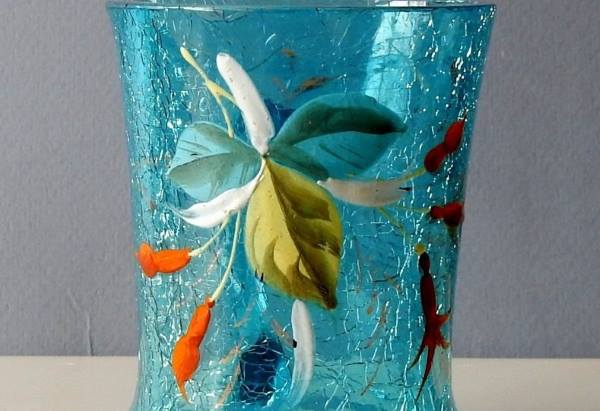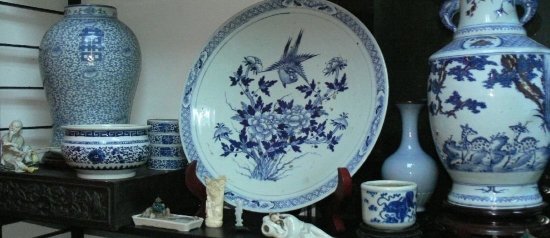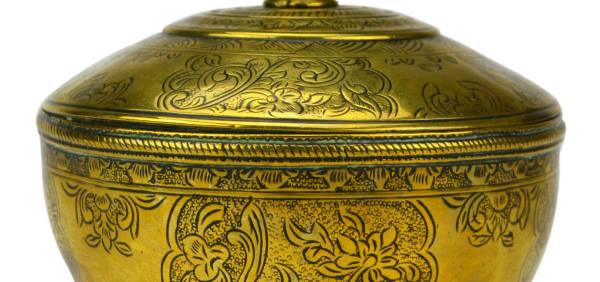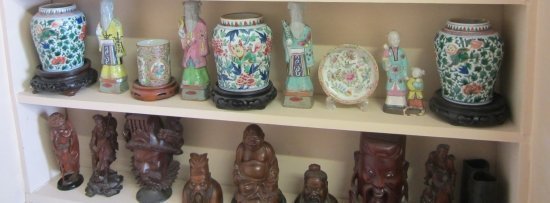Chipped or broken glass? Despite first impressions, all may not be lost, as Ian Dunn discovers on a visit to a glass repair specialist….
The snag with collecting ceramic and glass objects, it is often remarked, lies in their vulnerability. With furniture, damage is not seen as quite so important – ‘fair wear and tear’ the pundits say, nodding their heads at replaced feet and chipped edge mouldings, ‘add to charm and patination and can be mended.’ Oil paintings can be relined and damaged paint retouched. Provided the painting shows the original scene and Constable’s signature has not been added, such restoration is acceptable. With glass and ceramics the story is very different.
Quite apart from the questions of originality, so crucial to value, damaged glass in particular may lose its function. Most of us tend to leave damaged glass objects untended for want of knowledge as to what can be done and whether the cost is acceptable. It is reassuring to know whether things can be repaired to usable condition even if may be impossible to conceal the repair.
To find out what can be done by way of restoration to glass items, I visited the firm of F W Aldridge in Takely, Essex, who have been in existence for 70 years and managed by their current owner John Garwood for over 12 years, his daughter Angela having joined him recently.
The firm is known to both trade and private clientele, especially in the antiques world, although some of their work involves modern copying and reproduction. In addition to straightforward repairs they offer cutting and engraving services and cover additional materials such as repairs and plating for the silver associated with glass. This is so as to provide a full service or ‘one-stop shop’ for clients needing a single place of contact. The range of glass items currently being restored by Aldridge is comprehensive, going from the 17th to the 20th century, and it is probably best to deal with their scope under relevant headings.
Bottles
A wide range of bottles – apothecaries, ink, scent etc. – is repaired by grinding or adhesion and where sets are involved, replacements can be made.
Candlesticks
The damage to glass candlesticks follows the kind of rim chipping or stem or base breakage seen in wine glasses. Similar methods and processes are used to repair and restore them. Replacements can be made if necessary. Chandeliers Drops and other components are repaired, replaced from stock or made to order. Amongst the special commissions of which the firm is rather proud is a chandelier for the Fishers’ Hall in London, replicating an existing one.
Claret jugs
Claret jugs tend to be a speciality with Aldridge’s, who cover both the glass bodies and associated silver or pewter material. Stoppers are available or made as for decanters.
Cruets
Glass cruets are repaired in the same way as other items and bottles. Items too badly damaged can be replicated.
Decanters
A considerable number of decanters were in course of repair during my visit, including a number of plain ones from a celebrated London gentlemen’s club. Decanters are often chipped or damaged at the top rim and neck. If the extent of rim damage is too much to be lost by grinding, the top rim will be cut off entirely and replaced by a new one made accurately to the measurements of the old. Treatment of damage to the body will depend on its extent and how many of the original pieces are available. Stoppers are also a frequent problem with decanters. So often those available on decanters bought at auction or in markets do not belong or are damaged. Broken ones can be repaired but a wide stock of stoppers is maintained by Aldridge’s, who can also arrange to have exact replacements made. Tantalus decanters are often of more complex design and involve cutting or engraving. There is a stock of these as well as repair facilities especially for neck and rim damage.
Mirrors
Mirrors can be repaired and resilvered if this is appropriate. Complex mirrors in which elements of bevelled glass are part of the composition such as some of the girandoles of the Victorian era may require reassembly as well as glass repair.
Oil lamps
Oil lamps and glass chimneys are repaired or reproduced as required. Salts Aldridges have a very comprehensive stock of original moulds for blue glass liners for salts. They can also repair associated silver such as hinges on mustard pot lids.
Wine Glasses
Repairs of chips to rims and bases are most frequent. Damaged stems may be replaced in order to keep up a special set of glasses. This facility covers snapped stems as well. Processes and colours. The processes carried out include remaking, specialist gluing, grinding, filling and cleaning. Discoloration such as cloudiness inside bodies of bottles and other containers is removed by cleaning. Apart from clear glass, colours include Bristol blue, cranberry pink, green and amethyst. As mentioned above, deep blue salt liners are available from a comprehensive set of moulds.







